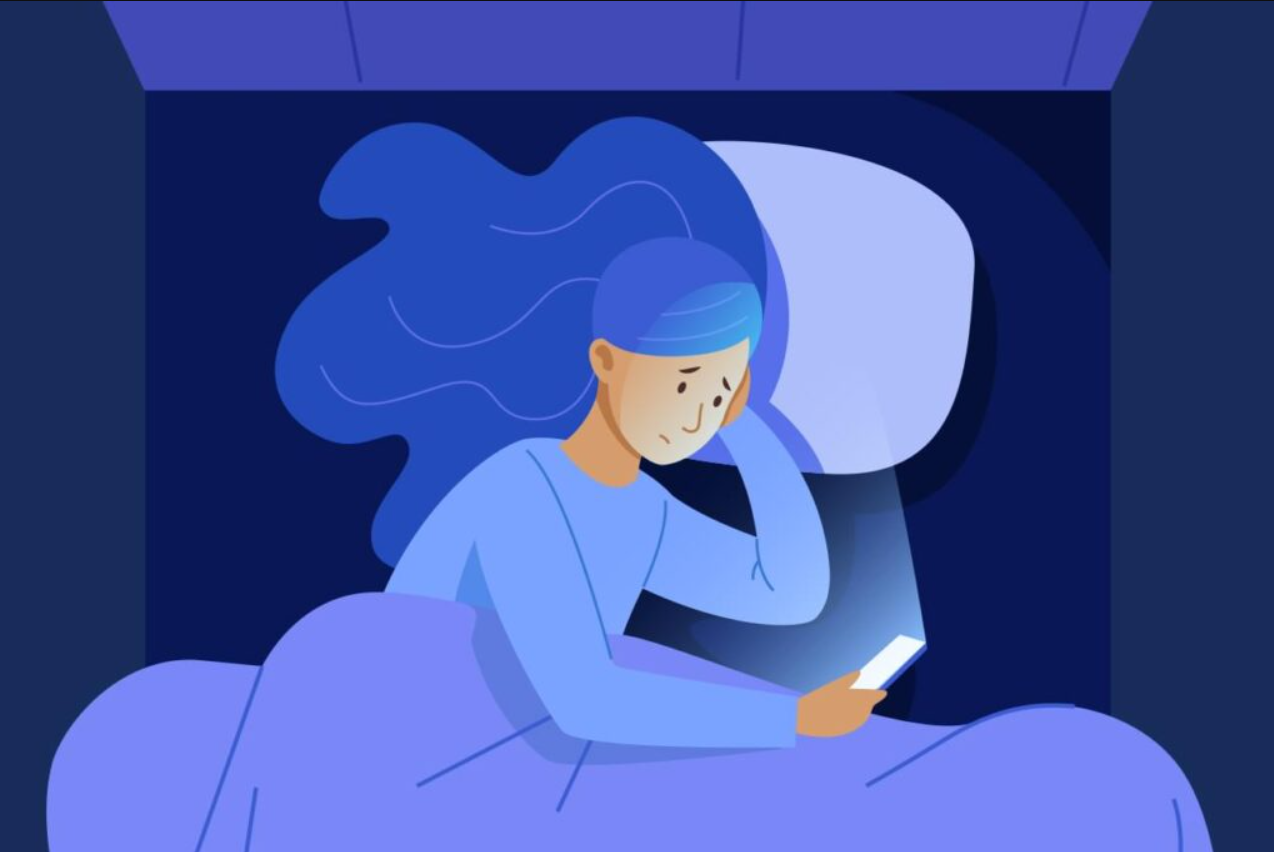Sleep Impact Explained.
Impact social media has on sleep:
Social media takes away from the time that should be spent sleeping, and this lack of sleep is leading to effects on the mental, physical, and emotional health of teenagers. TikTok data shows that 19% of users aged 13-15 and 25% of 16-17 year old users are active between the hours of midnight and five in the morning. Data has shown that disruptions in sleep are correlated with the use of social media within one hour of going to sleep. In May of 2023, the United States Surgeon General released an advisory on youth mental health and social media. The advisory included the harmful effects that social media has on sleep and how uncontrollable or excessive social media use has been linked to attention problems as well as issues with sleep. 93% of Generation Z aged lose sleep due to staying up in order to use social media. These children who are missing out on sleep don’t have the required amount of sleep to excel in the classroom, sports, and extracurriculars. However, this is not just an issue among younger people; 80% of the population loses sleep due to staying up and using social media. This is a pervasive problem affecting all of us. Another issue with the use of social media is the addiction it causes. Social media is designed to be addictive because these companies need users to spend as much time scrolling as possible, maximizing ad revenue. Each company has its own addictive algorithm that manipulates the reward system in your brain, compelling you to use social media late at night and leaving less time to sleep. A common theme among these social media companies is the use of push notifications, which draw users back to the app whenever something happens. However, these notifications are not just limited to waking hours; oftentimes, these companies send notifications when people should be asleep, drawing users back to the app when they should be sleeping instead. Instagram uses these push notifications to prey on the differing developmental state that teenagers have compared to adults. The developmental state of teenagers instinctively makes them seek social rewards more than adults do. They also have a lack of impulse control, which makes them especially vulnerable to push notifications. Instagram is also designed to immerse users in a flow state where they are fully absorbed by the content. When children are in the flow state, they may mindlessly scroll for long periods of time without interruptions. A study has even shown that 1 in 6 teenagers report using Instagram constantly, which is an extremely concerning statistic when thinking about the risk of sleep disruption. YouTube is also a prominent example of a design that enters users into a flow state. YouTube uses recommended videos to hook users on videos that will interest them and an autoplay feature that means videos just don’t end until you get off the app. These features are part of the reason why a study has found that for every 15 minutes a teenager spends on YouTube, their chance of sleep deprivation increases by 24%. Overall, social media affects the sleep of youth through blue light exposure and an addictive cycle of engagement that stands in the way of sleep.
Negative effects of less sleep:
Less sleep and even poorer quality sleep can lead to issues with well-being and development, as well as causing children to be more tired throughout the day. Repercussions of sleep include cardiovascular risk, lowered cognitive performance, a compromised immune system, depression, lowered immune function, increased risk-taking, poor mood, poor performance in school, and issues with weight. Teenagers who are sleep-deprived are more likely to drive dangerously, use drugs and alcohol, and commit violent acts.
